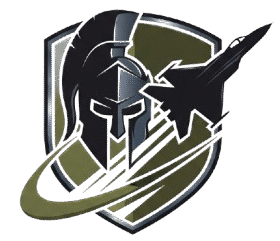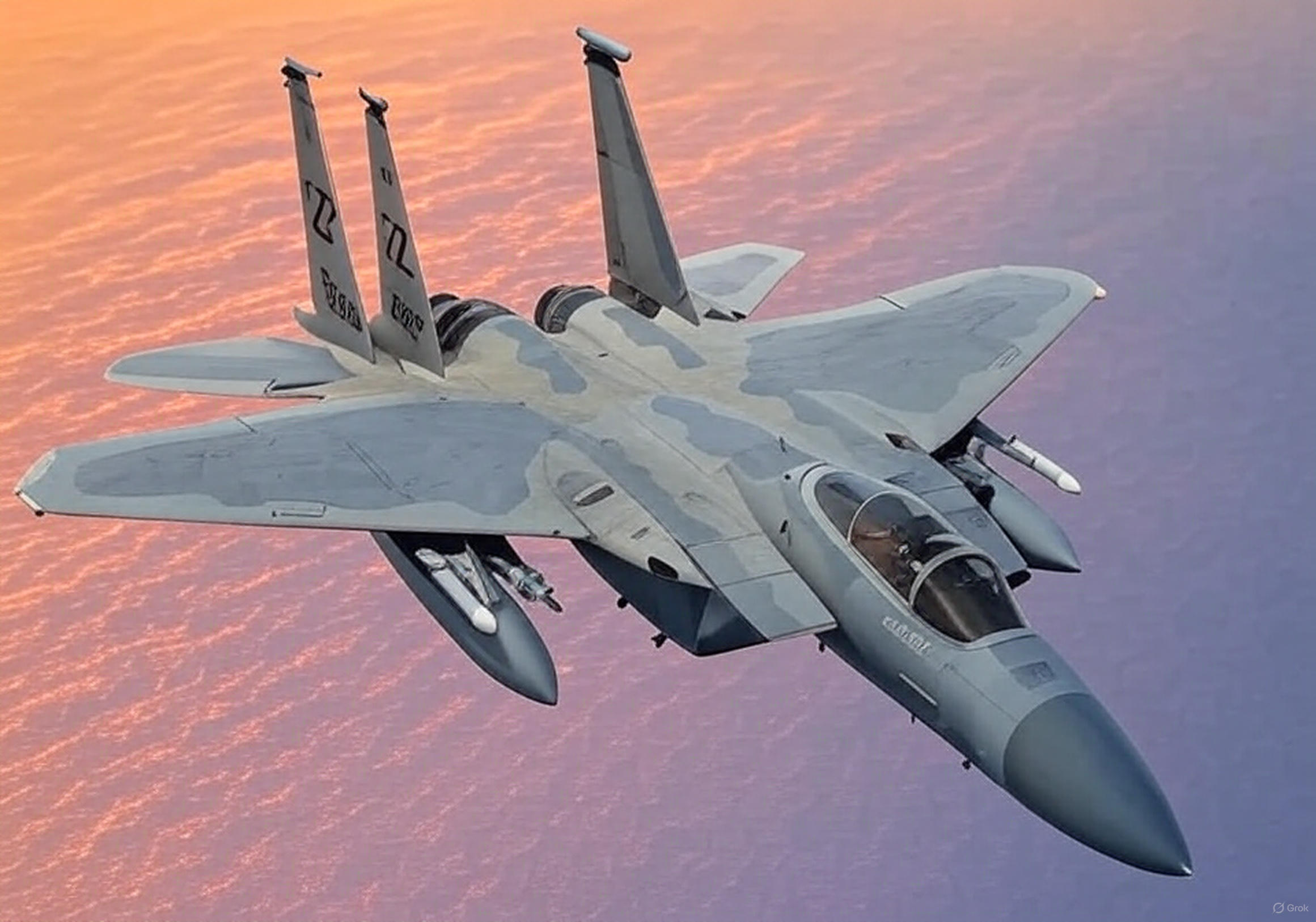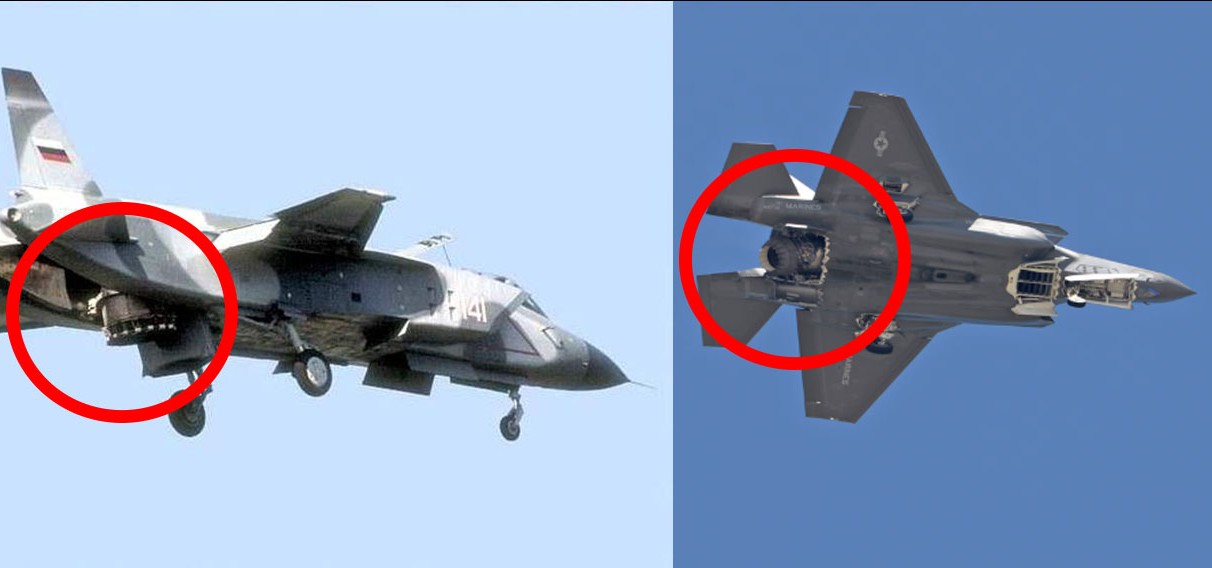During the Cold War and earlier periods, the Soviet Union embarked on a series of audacious military projects aimed at asserting technological and strategic dominance. From the Polyus (Skif-DM) space weapon designed to counter the U.S. Strategic Defense Initiative (SDI) to the colossal T-42 super-heavy tank and the propaganda-driven Maxim Gorky aircraft, these initiatives showcased Soviet ingenuity and ambition. Other projects, like the Sukhoi T-4 strategic bomber and the Kalinin K-7 experimental bomber, further highlighted their relentless pursuit of innovation. However, technical challenges, high costs, and political shifts often led to their downfall. This article explores these remarkable yet largely unsuccessful projects, offering insights into the Soviet Union’s military aspirations and the lessons learned from their failures.
Polyus (Skif-DM): The Soviet “Death Star”
In the 1980s, the Soviet Union developed the Polyus, also known as Skif-DM, as a clandestine space weapon to counter the U.S. Strategic Defense Initiative (SDI), famously dubbed “Star Wars” by President Ronald Reagan. The SDI aimed to intercept Soviet missiles using space-based lasers and advanced weaponry. In response, the Polyus was equipped with a megawatt carbon dioxide laser intended to destroy U.S. SDI satellites, earning it the nickname “Soviet Death Star” due to its resemblance to the fictional weapon from the Star Wars franchise.

Design and Features
The Polyus spacecraft, weighing approximately 90,000 kilograms, measured 40 meters in length and 4 meters in diameter. It consisted of two main sections:
- Functional Cargo Block: Equipped with solar panels for power and small rocket engines for orbital maneuvering.
- Purposeful Module: Contained carbon dioxide tanks and turbo-generators to pump gas, generating a powerful laser beam by exciting carbon dioxide atoms to emit light.
To conceal its military purpose, Soviet engineers incorporated xenon and krypton gases into the laser’s exhaust system. These gases interacted with Earth’s ionospheric plasma, allowing the Soviets to disguise the spacecraft as a peaceful geophysical experiment.
Launch and Failure
On May 15, 1987, the Polyus was launched from Baikonur Cosmodrome in Kazakhstan using the Energia rocket, the Soviet Union’s most powerful launcher capable of carrying 95 tons to orbit. This was Energia’s maiden test flight. However, a technical failure occurred 568 seconds after launch due to a faulty inertial guidance sensor, borrowed from another spacecraft and installed without proper testing. The spacecraft began rotating in the wrong direction, completing a 360-degree turn instead of the intended 180 degrees, causing its engines to push it back toward Earth. The Polyus re-entered the atmosphere over the South Pacific Ocean, breaking apart and disintegrating.
Political Context and Legacy
Soviet leader Mikhail Gorbachev, keen on ending the Cold War and improving relations with the West, explicitly banned orbital testing of the Polyus during his visit to Baikonur on May 11, 1987. He feared that testing would signal aggressive intentions, undermining Soviet claims of peaceful space exploration. The launch failure dealt a severe blow to the Soviet space weapons program, and Gorbachev’s reforms, coupled with the end of the Cold War, prevented its revival. The Polyus remains a symbol of the intense technological rivalry of the era.
T-42 Super-Heavy Tank: A Colossal Experiment
In the 1920s and 1930s, the Soviet Union sought to build powerful tanks to bolster its military might. The T-42 super-heavy tank, designed with input from German engineer Edward Grotte through collaboration at the Kazan Tank School, was a product of this ambition. This partnership occurred during a period when Germany faced post-World War I restrictions on tank development, leading to covert cooperation with the Soviets.
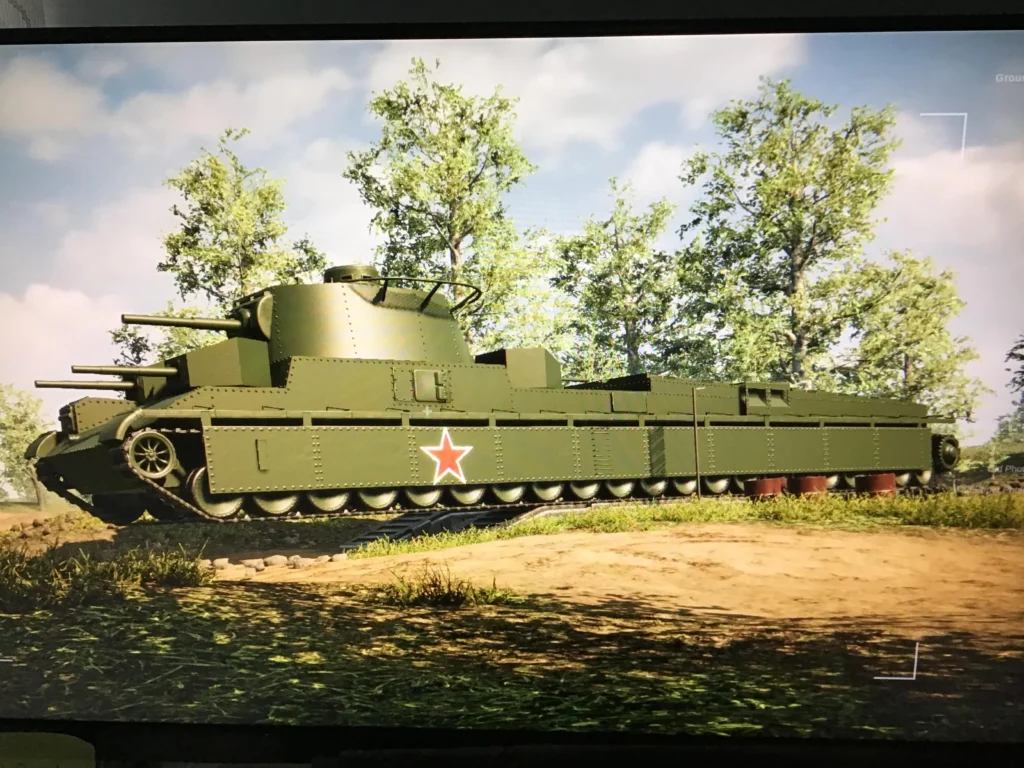
Design Specifications
The T-42 weighed 100 tons, twice the weight of contemporary tanks, and required a crew of 15. Its armament included:
- One 107 mm M1910 field gun.
- Two 7.62 mm machine guns.
- Two 45 mm BT-2 tank turrets.
The tank featured five armored turrets, a driver’s compartment positioned forward for better battlefield visibility, and a rear power compartment housing two 2000-horsepower diesel engines. These engines aimed to achieve a speed of 17 miles per hour, supported by 17 pairs of small-diameter rollers, a rear driving sprocket, an idler, and an electrical transmission system for easier control.
Challenges and Cancellation
Despite its ambitious design, the T-42 never progressed beyond the prototype stage. Its high cost, slow speed, and excessive weight made it impractical for modern warfare, where mobility and stealth were increasingly critical. Labeled a “sitting duck” due to its size and vulnerability to enemy aircraft and artillery, the T-42 was deemed unsuitable. The Soviet military shifted focus to the lighter and more practical T-35 tank, abandoning the T-42 project.
Maxim Gorky: The Propaganda Giant
Named after the renowned Russian writer Maxim Gorky, the Tupolev ANT-20 was the largest combat aircraft of its time, boasting a 206-foot wingspan and powered by eight engines. Approved by Joseph Stalin, it was primarily a propaganda tool to promote Communist ideals rather than a combat platform. The aircraft was equipped with:
- A library and printing equipment for producing thousands of pamphlets.
- A radio set for public communication.
- A projector to display Communist messages on the night sky.
With a crew of at least 10 and capacity for 72 passengers, the Maxim Gorky was a flying propaganda machine.
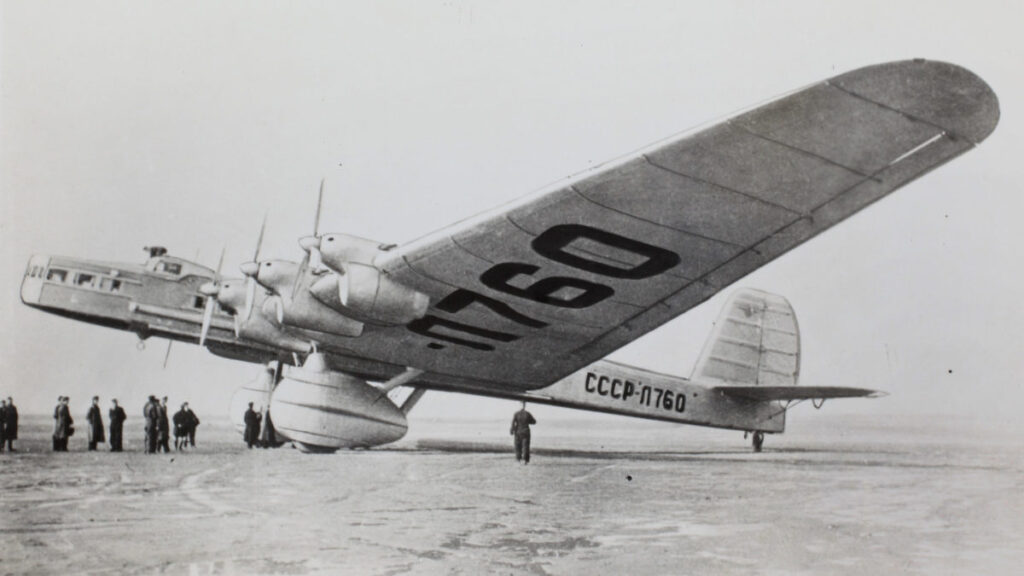
Operational History and Tragedy
The Maxim Gorky first flew in 1934 and conducted propaganda missions for over a year. On May 18, 1935, during an airshow near Moscow, it collided with an I-5 fighter piloted by Nikolai Blagin. The fighter, performing loops around the ANT-20, struck its wing on the third loop, causing the Maxim Gorky to crash into a residential area, killing 45 people. A second ANT-20 was built, but after Germany’s Operation Barbarossa in 1941, it was repurposed to transport troops to the front lines. On December 14, 1942, it crashed after a passenger inadvertently disabled the autopilot, causing a rapid descent from 1600 feet. No further attempts were made to rebuild it.
Sukhoi T-4 (Project 100): A High-Speed Ambition
During the Cold War, the Soviet Union aimed to counter the U.S. North American XB-70 Valkyrie, a six-engine bomber capable of Mach 3 speeds at 70,000 feet. In 1963, the Soviet government commissioned the Sukhoi T-4 (Project 100), a high-speed reconnaissance and strategic bomber. The T-4’s design, resembling the XB-70, featured intake ramps and an airframe constructed from steel and titanium. It required over 600 new inventions due to the Soviet Union’s technological limitations at the time.
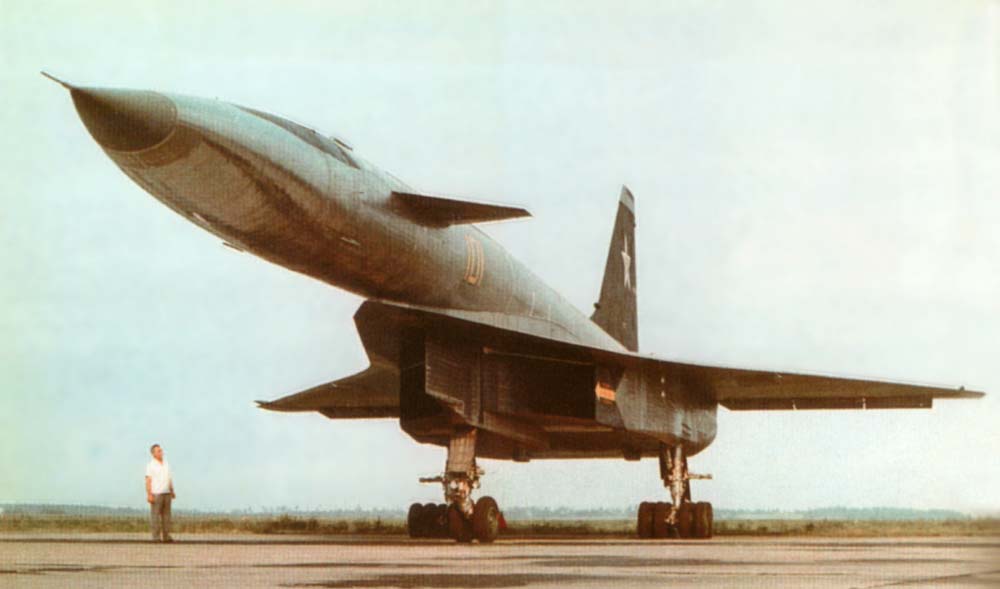
Performance and Cancellation
The T-4’s prototype flew in 1971 but achieved only Mach 1.3 and an altitude of 39,000 feet, far below the XB-70’s capabilities. Budget constraints and technical challenges led to its cancellation after a single prototype. Today, the T-4 is displayed at the Central Air Force Museum in Monino, Russia, as a testament to Soviet ambition.
Kalinin K-7: The Experimental Bomber
Design and Dual Purpose
Designed by Konstantin Kalinin, a veteran of the Soviet Revolution and World War I, the Kalinin K-7 was an experimental aircraft from the 1930s intended for both civilian and military use. In its civilian configuration, it could carry 120 passengers, while the military version accommodated 112 armed paratroopers. As a bomber, it was equipped with:
- Eight 7.62 mm machine guns.
- Eight 20 mm cannons.
- Up to 21,200 pounds of bombs.
Its unique design featured twin booms and underwing pods housing landing gear and some machine guns.
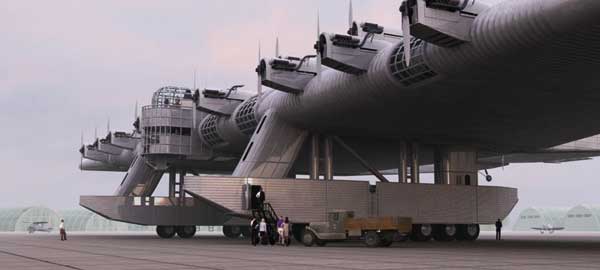
Testing and Failure
The K-7 first flew in 1933 but suffered from instability and vibration issues. Despite modifications, a tail boom failure during a test flight in November 1933 caused a crash, killing 14 people. Rumors of sabotage circulated but were never substantiated. Although two more prototypes were ordered, the project was canceled in 1935 due to persistent issues.
Conclusion
The Soviet Union’s ambitious military projects—Polyus, T-42, Maxim Gorky, Sukhoi T-4, and Kalinin K-7—reflect a bold vision to push technological boundaries during a time of intense global rivalry. While these initiatives showcased Soviet engineering prowess, they were often thwarted by technical limitations, excessive costs, or shifting political priorities. The failure of Polyus helped de-escalate the space arms race, while the other projects exposed the challenges of balancing innovation with practicality. These stories offer a window into the Cold War’s technological and political struggles, where superpowers raced to outdo each other, often at great cost.
